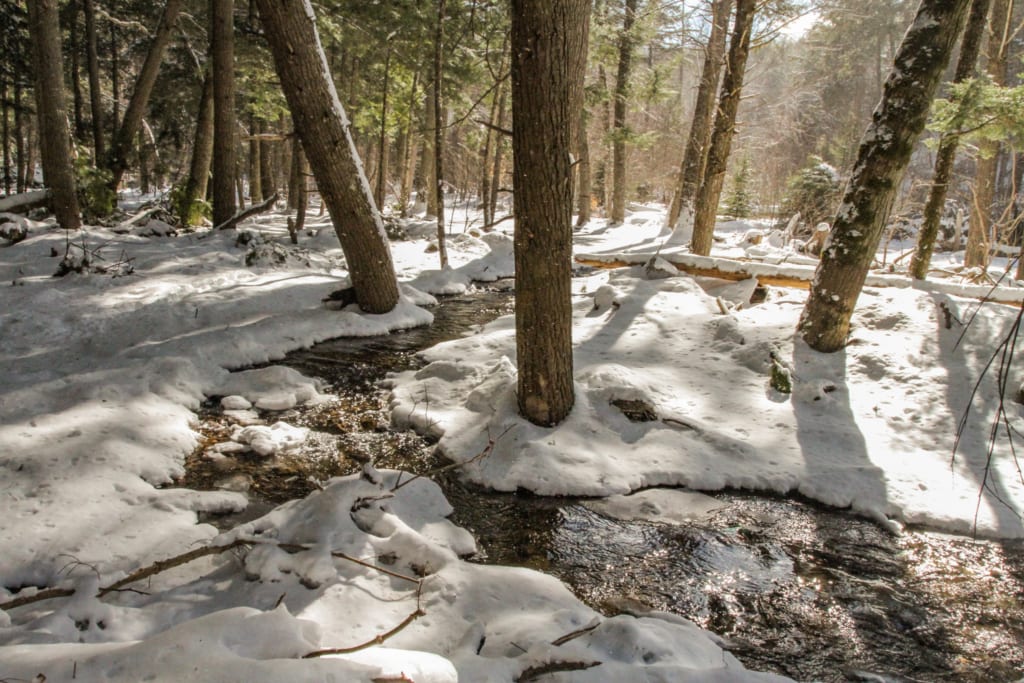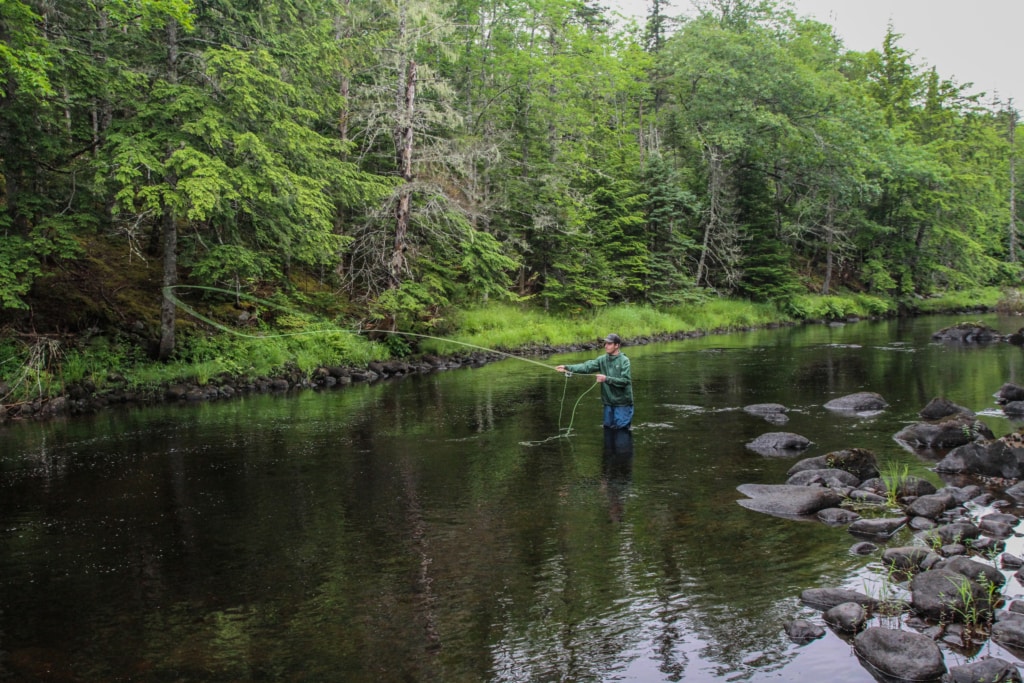___
Help Us Fight The Hemlock Woolly Adelgid
Our ancient hemlock trees are dying. We need your help to protect them.
_______

Morning sun piercing through an old growth eastern hemlock forest, threatened by the invasive hemlock woolly adelgid. (Simon Ryder-Burbidge.)
_______
Hemlock under attack
The towering eastern hemlock tree has been a defining feature of the forest in Mi’kma’ki for millennia. With individual trees living more than 400 years, hemlocks form the lush and shady old growth stands that characterize some of Nova Scotia’s most iconic woodlands. Beyond the beauty and magical feel of the forest, old hemlocks provide critical shelter for wildlife, shade and cool fish-bearing waterways, and soak up atmospheric carbon to combat climate change.
Today, Nova Scotia’s hemlock forests are under attack. A prolific and invasive pest called the hemlock woolly adelgid (HWA) is killing hemlock trees across the southwest of the province, and moving rapidly northward. HWA sucks tree sap and starves the tree of food and water, leading to near certain death.
Donate today!
Hemlock woolly adelgid; “grey ghost” hemlock woods following an HWA outbreak in North Carolina. (New York Invasive Species Council; Steve Norman, US Forest Service.)
_______
How we can save our hemlocks
Actions like reducing firewood transport and enhanced forest monitoring are important to prevent the spread of HWA. But unfortunately, the fast-moving HWA has left these efforts falling far short. Keeping our hemlocks alive now requires a small, specialized pesticide injection directly into the tree’s lower trunk. A single injection allows a hemlock to survive for 4-7 years before requiring retreatment.
How you can get involved
The rapid expansion of HWA means we have to act and expand capacity fast. We are looking for individuals, communities, social enterprises and institutions to contribute to treatment efforts:
- Donate your time and energy. Join expert forest ecologists for training on treatment methods, and get out into the woods with us. Medway Community Forest Cooperative is hosting training events starting this summer. Sign up and help out!
- Donate to the Hemlock Conservation Legacy Fund. Your money goes directly towards the purchase of treatment supplies and training sessions for volunteers, allowing us to reach more hemlock trees faster. Donate today and help us get more trees treated!
_______

Towering hemlock trees make long shadows on a winter afternoon. (Simon Ryder-Burbidge.)
_______
Maximize Your Impact
Treating Nova Scotia’s old growth hemlock forests before they succumb to HWA is going to require scaling up. We need your help if we’re going to protect the best of what’s left.
$50: Adopt-a-Hemlock
Every tree counts.
Your $50 donation will save an old growth hemlock tree. They’re relying on you and so are we.
$500: Steward of Salmon and Stream
Keeping our waterways cool.
Conserve old hemlocks lining migratory watercourses, spawning pools and nesting sites for wild salmon and trout.
$1000: Old Growth Guardian
Protecting an old growth hemlock forest glen.
Save dozens of trees and preserve the damp, shady stands that characterize our ancient woods and house some of our most beloved wildlife.
$5000: Forever Forest Keeper
Preserving the integrity of an entire ecosystem.
Forest Keepers are responsible for preventing the large-scale alterations that HWA is making in our forests. You are the guardian angel of the woods.
______

Bright green hemlock needles pouring over the riverbank. (Simon Ryder-Burbidge.)
_______
Small donations: Heart of the Hemlock
We need you too!
Small donations lift our spirits and keep gas in the tank on the way to the woods. Thank you very much for whatever you are able to contribute. We need all the help we can get.
Pay what you can today. Save these grandmothers of the Wabanaki-Acadian forest!
Sunlight shines down through a dark green canopy onto a rich and mossy forest floor. The breeze calms and the temperature cools at ground level. A deep view through enormous mature trunks, spaced out over thousands of years, yields the hidden movement of wildlife in all directions. Birdsong fills the air. Stepping into these cathedrals of nature can feel like walking into an ancient and profound past. These are the old hemlock woods.
_______
Frequently asked questions
Everything else you need to know. Don’t hesitate to reach out with questions.
Q1: Why are hemlocks are so important?
Beyond the beauty and mystique of the old growth forest, hemlocks are tightly connected to the health of our ecosystems. Waterways flowing under shaded hemlocks are cooled, maintaining habitability for fish like wild salmon and trout. Massive root systems stretching along steep stream banks can slow erosion, intercept runoff, and stabilize stream systems. Dense canopies extend shelter to wildlife unlike any other tree in the Wabanaki-Acadian forest, providing refuge from intense heat, extreme cold, deep snows, and ice storms.
Q2: What is the government doing about this?
After six years of unchecked HWA advancement, the Government of Nova Scotia is beginning to treat hemlock trees in some provincial protected areas. This effort is funded primarily through the federal department of Environment and Climate Change. However, for many of our most precious hemlock forests on both public and private lands, these efforts are too little, too late.
Q3: Why the Hemlock Conservation Legacy Fund?
Saving the last giants of the forest requires substantial funding and rapid action due to the pace that hemlocks are dying. Hundreds of woodlot owners now are asking for assistance to save their hemlock trees where none currently exists. Nature Nova Scotia will provide financial assistance and expert capacity through the Hemlock Conservation Legacy Fund.
Q4: How does treatment work?
Chemical injection methods have benefited from decades of research in the United States, harnessing the tree’s biology and the upward flow of sap to reach populations of HWA feeding in the canopy.
Q5: What is the long-term plan?
Stopgap chemical treatments buy time for the longer-term implementation of a “biocontrol program”, where HWA predator populations (a tiny beetle and a silver fly, both native to western Canada) build sufficient numbers to control pest populations without aid of chemicals.






















